Everynuc poly nuc
Thorne’s have introduced two new poly nuc hives recently – one called the Polynuc (~£27) and the other the Everynuc (~£47). Both are available in British National dimensions. I’ve not seen the Polynuc but consider the walls, at 22mm, to be a little on the thin side for overwintering colonies (perhaps about the same as the Paynes poly nucs). However, I have recently taken delivery of half a dozen Everynuc poly nucs with the intention of expanding my stock, by splitting production colonies (after the honey harvest) and using mid/late season-reared queens to take them through the winter. Here are my first impressions.
The Everynuc is an interesting design. It’s available in a range of different sizes; Langstroth, National, Smith, Commercial, 14×12, Dadant etc. All have a rectangular, preformed (i.e. no assembly required) brood box with 40mm thick walls and neat metal runners at each end for frames. I suspect this box is the same size for all frame sizes. To accommodate smaller frames e.g. National in the Langstroth-sized box, they supply a slot-in feeder that takes 2.2 pints. The deeper frames e.g. 14×12 and Commercials also include a 40mm or 60mm eke that presumably goes between the brood box and the removable floor. The latter is sloping, with open mesh and has a removable tray for Varroa monitoring. There is a clear plastic crownboard and a thick roof. The exterior of the box is commendably smooth, so much easier to paint than the Modern Beekeeping/Paradise Honey boxes).
Thorne’s claim the Everynuc is top bee space. Well, it is and it isn’t. In the National size, the top edge of the feeder sits 2-3 mm above the frame runner, meaning that the top bar slopes. To rectify this I’ve cut a couple of millimetres off the bottom of the feeder lugs, effectively lowering the feeder sufficiently to restore top bee space. While we’re on the subject of bee space, it’s definitely wrong at the end of the box without the feeder where I measure the gap at 1.5cm. This is poor and may reflect some sort of compromise to accommodate the different length lugs on National and other types of frames. For the moment I’ve not done anything about this, but if brace comb becomes an issue I intend to skin the inside end panel with some 8mm ply to restore the correct bee space.
The Everynuc is designed for 5 frames and a dummy board. With brand new frames you can just about cram 6 frames in, but as soon as the Hoffman spacers get a bit of propolis on them it’ll definitely be a 5 frame box. With good thick walls and a solid roof this is a good size to overwinter.
In addition to lowering the feeder I’m looking at ways to add a metal or plastic runner to the inside edge of the feeder, fitted just proud of the cut ply, to make frame manipulations easier. I’ve also added a thin piece of stripwood across the top of the feeder to stop the frames sliding backwards and forwards when the boxes are being moved. There is a small wooden spacer on the bottom edge of the feeder, but this additional cross brace should add a bit more security and prevent bees getting crushed. On the subject of moving colonies, I routinely make up 2-3 frame nucs for queen mating and then transport them from one apiary to another. Rather than letting the frames slide about side to side I’ve cut small blocks of dense foam to wedge them tightly in place for travel. An additional block of foam will be required for the entrance, which is wide and, with the short ‘landing board’, an awkward shape to block with mesh held in place with drawing pins (my favoured solution to transporting nucs).
First impressions of these nucs are reasonably positive. The beespace might be a problem, the frame feeder really shouldn’t need lowering and the entrance is likely to require some sort of reducing block to prevent robbing. However, the poly is dense and well moulded, with no real nooks and crannies to harbour pathogens. Cleaning should be straightforward. The boxes will stack if it is necessary to unite colonies.
Finally, I wonder how many beekeepers noticed the name of the manufacturer of the clear plastic crown board …
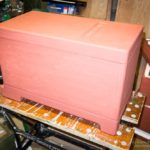
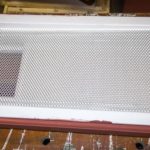
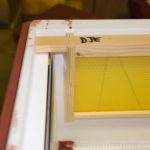
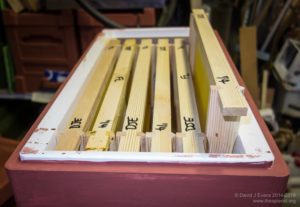
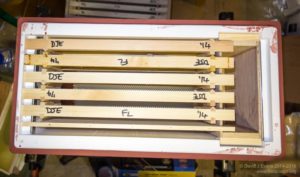
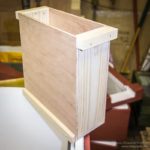
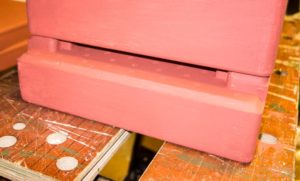
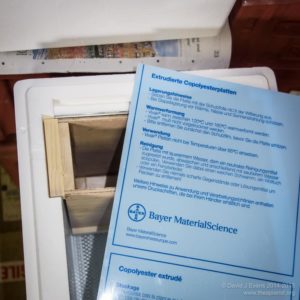
Join the discussion ...